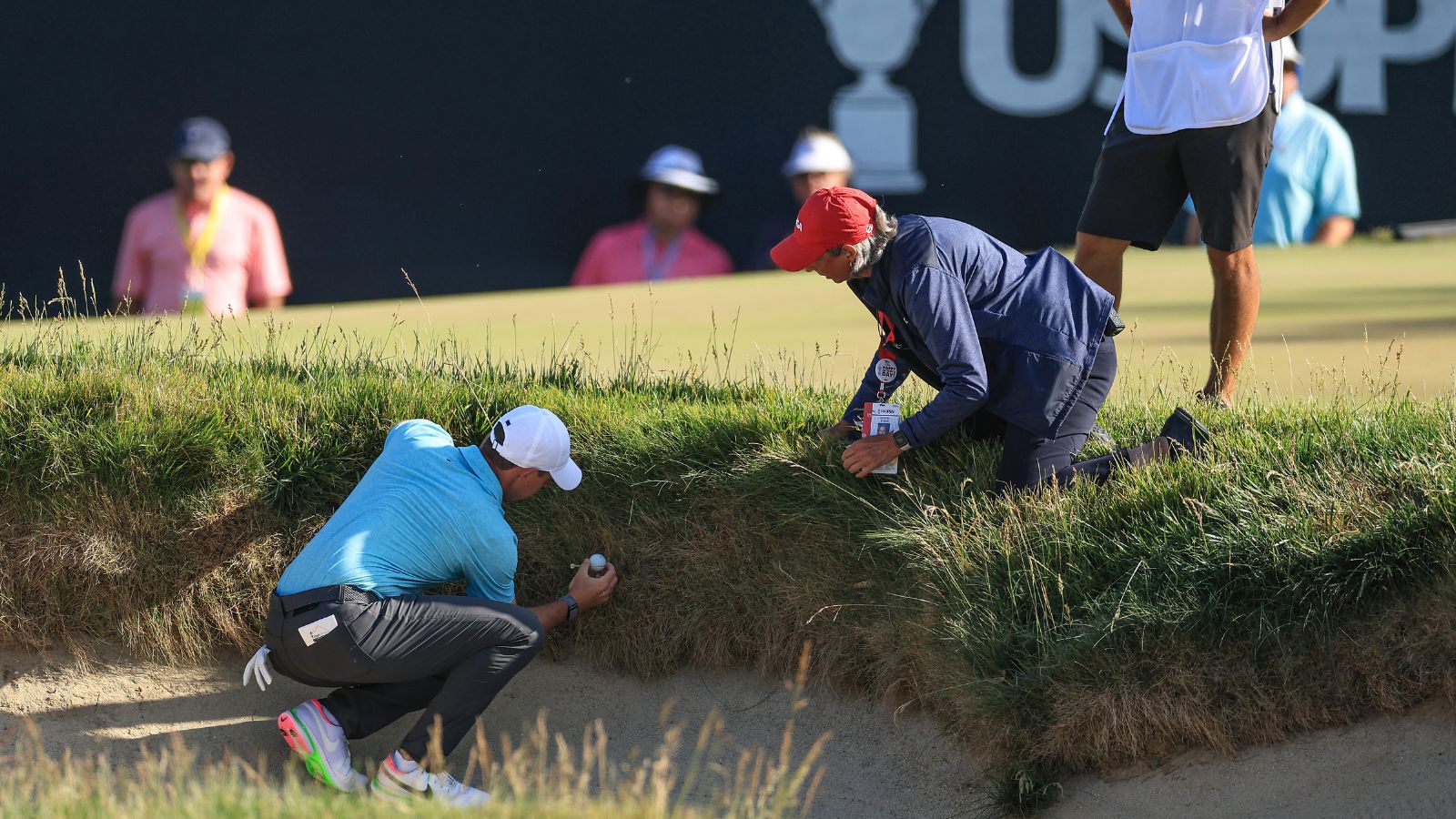USGA Admit They Gave Rory McIlroy Incorrect Drop At US Open
The Northern Irish golfer was in contention during the final round, but found himself in a tricky position on the par-5 14th


The USGA has admitted that they 'mis-identified' a relief point Rory McIlroy was given during the final round of the US Open, with the Governing Body also clarifying that the Northern Irishman was not at fault for the incident, explaining that the 34-year-old "wasn't doing anything to gain an advantage."
McIlroy came into the final round of the tournament one shot back from Wyndham Clark and, having been within touching distance of the American, eventually came up just short as he finished in a share of second place and Clark went on to clinch his maiden Major title.

Things might have been different for McIlroy though, who in his final round at Los Angeles Country Club was involved in a slightly odd ruling on the par-5 14th hole that has since been reviewed by the USGA.
At the time, the FedEx Cup champion struck an approach shot from around 125 yards that fell short of the green, landing on a hill above a bunker. His ball was entangled in the thick grass on the mound and, upon inspection, McIlroy called an official to give him a ruling on the lie. The official determined that McIlroy could have a free drop after it was embedded in the rough.
The controversy came as a result of where McIlroy was allowed to drop his ball, with Thomas Pagel, the USGA's Chief Governance officer, telling Sports Illustrated: “The nearest point of relief was mis-identified; it should have been directly behind the ball."
At the time, the 2011 US Open winner was allowed to take a drop one club length away from where the ball landed, but McIlroy went on to make a bogey, chipping out of the coarse grass before sending his par putt just right of the hole.
"If there’s no area immediately behind the ball, you go to nearest point in the general area. But if you look at where the ball was embedded, there was a grassy area below and that should have been the starting point," Pagel explained.
Subscribe to the Golf Monthly newsletter to stay up to date with all the latest tour news, equipment news, reviews, head-to-heads and buyer’s guides from our team of experienced experts.
"His ball was 100 percent embedded and an embedded ball not in sand is entitled to relief. Now Rory did everything at the discretion of the referee. In her (Courtney Myrhum) discretion, her judgment was that the reference point for relief was to the side of the ball. And from a ruling standpoint, that’s the end of the story."
Under USGA rule 16.3, players are allowed free relief for a ball that is embedded anywhere in the 'general area', but does not include when it is submerged in sand. The rule adds "the player drops the ball within one club-length (but not nearer the hole than) the spot right behind where the ball was embedded."
The rules official who was instructing McIlroy on where to drop his ball was Courtney Myrhum, an experienced member of the USGA's Executive Committee who has worked as an official in 50 championships including several Majors.
“She’s an extremely well-qualified referee and she did everything in her judgment where to operate the drop," Pagel stated. "However, after further review it was determined that there was a spot in the general area immediately behind the ball that was the reference point for relief.
"If you look at where the ball was embedded, just below should have been the starting point (for taking relief), but even if his club length had been measured from behind the ball, he still would have been dropping on the shelf from where he played from. As it was, he measured the club length from the top of the wall to the right. As he dropped the ball out of that area, he had to drop a second time."
While the new lie ultimately didn't give McIlroy much of an advantage, considering the outcome, Pagel explained: "When you start dealing with vertical faces, that’s where the question is. In this case, there was a lot going on but there was a place behind the ball where he could have started to measure.
"From where he started measuring from, he didn’t get a break. And he did all of this at the discretion of the referee. He wasn’t doing anything to gain an advantage as he was told how to apply the rule on where to drop."

Ed has been playing golf for as long as he can remember and is obsessive about the sport. He is regularly sought after by family members and friends for advice on what equipment to buy and uses his background, having written extensively on golf in the past, to produce equipment orientated content for Golf Monthly.
Having obtained a Masters in Law with Medicine from the University of Liverpool, Ed has recently changed paths into journalism and just last year achieved his NCTJ Sports Journalism Diploma with the Press Association.
He has written for a variety of media outlets over the years and has interviewed some big names in sport, including Premier League managers, All Blacks Coaches and Grand Slam tennis superstars. He has also worked on some huge sporting events, including the 2021 Australian Open and the 2022 FIFA World Cup. And when he's not writing for Golf Monthly, you'll find him producing news and feature articles for the MailOnline's sports desk, where he covers everything from football to rugby union.
During his weekends off, you'll likely find Ed heading out for a round at one of his local golf clubs with his friends, and was, up until recently, a member at the Leatherhead Golf Club in Surrey. Ed also plays the saxophone, can tell you some pretty terrible dad jokes and can knock up a very tasty carbonara!